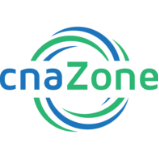Course Description
Lung Cancer
Course Summary
Lung cancer is a common malignant disease and has surpassed other forms of cancer. Although there are common risk factors associated with lung cancer such as smoking, age, and race, people who do not smoke or who are exposed to environmental toxins can still be diagnosed with lung cancer. There are several ways to diagnose cancer and the hope is that it will be diagnosed early in the disease process. Treatment can improve the patient’s survival rate and quality of life, and may include chemotherapy, radiation therapy, or a combination of both amongst other treatment options. Lung cancer that is diagnosed late has a poor prognosis. For end-stage lung cancer, palliative care measures are generally added to the patient’s treatment plan and involve the complete health team. The burden of lung cancer is enormous in the United States. Prevention such as smoking cessation is an important step to reduce the incidence of lung cancer.
Course Objectives
- Describe the causes of lung cancer
- Identify treatment options for lung cancer
- Explain the importance of smoking cessation to the prevention of lung cancer
Course Syllabus
Target Audience:
CNA
Credits:
1.0



